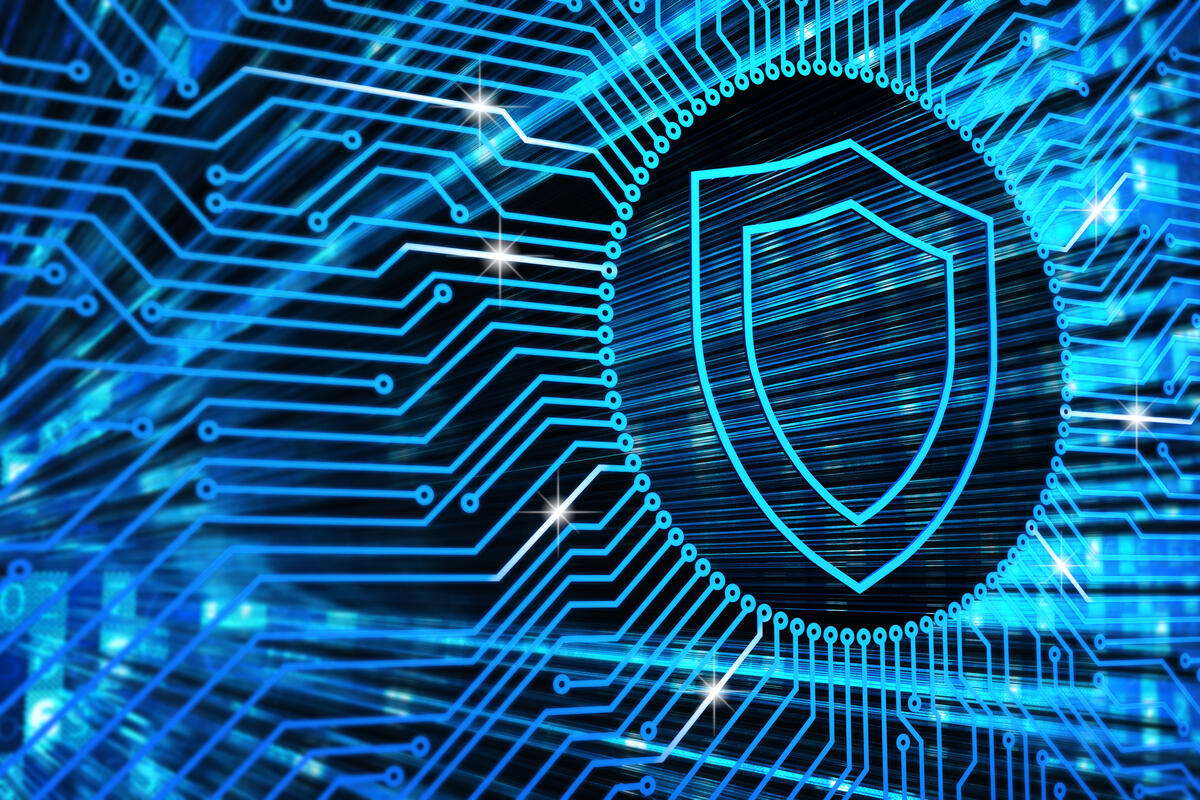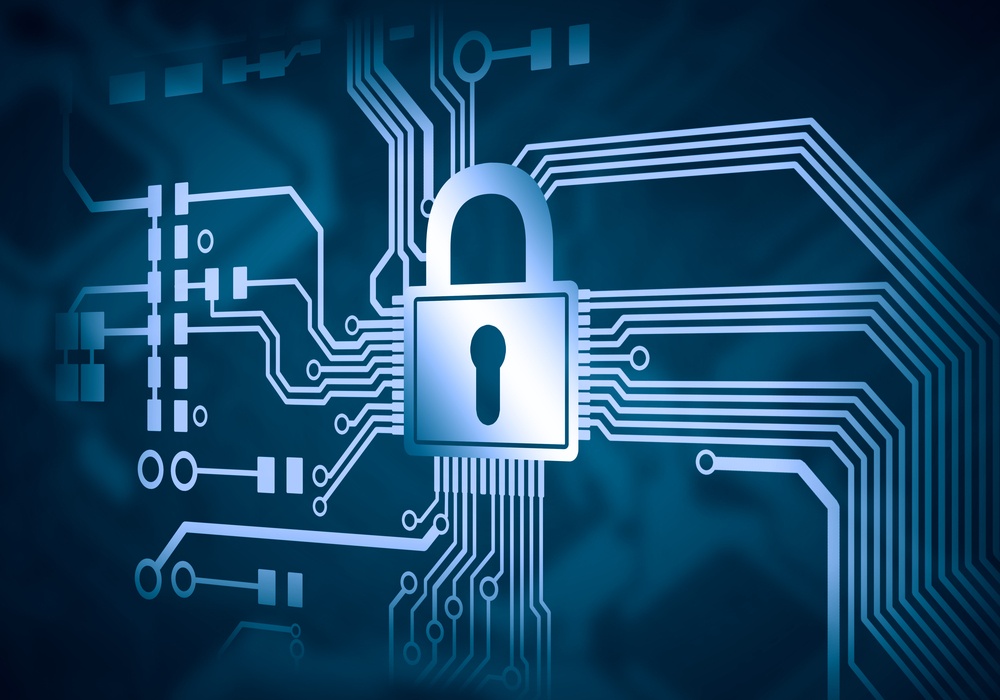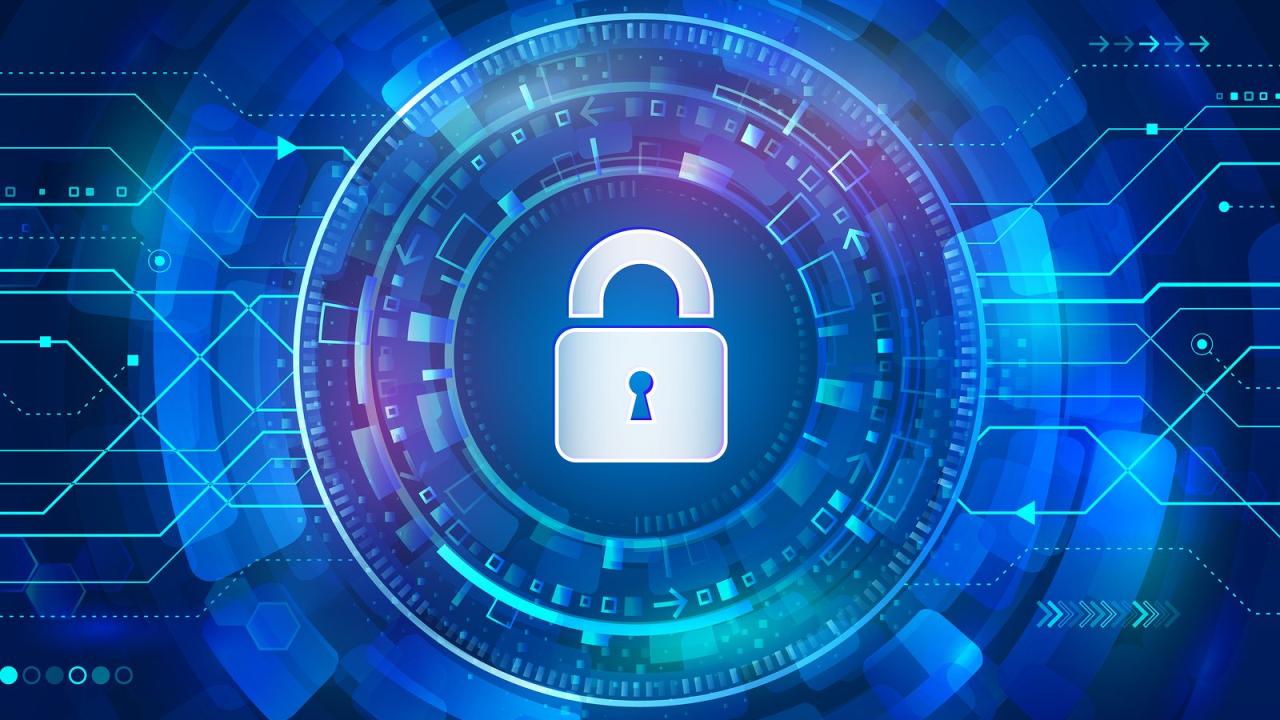Advanced Mobile Security: Shielding Your Devices
Welcome to the Cybersecurity Frontier
The Growing Importance of Cyber Defense
In a world dominated by technology, where our lives seamlessly intertwine with digital platforms, the importance of cyber defense has reached unprecedented heights. The escalating frequency and sophistication of cyber threats have made robust cybersecurity measures not just advisable but imperative.
As our personal and professional activities migrate to the digital realm, the potential vulnerabilities increase exponentially. From financial transactions to personal communications, the sheer volume of data circulating in cyberspace is a treasure trove for cybercriminals. Hence, the growing importance of cyber defense is a response to the need for safeguarding the integrity, confidentiality, and availability of our digital assets.

Role of Firewalls and Antivirus in Safeguarding Digital Frontiers
Enter the unsung heroes of the digital realm – firewalls and antivirus software. These technological gatekeepers play a pivotal role in defending our digital frontiers against an array of cyber threats. Acting as the first line of defense, firewalls and antivirus software work in tandem to create a formidable barrier that shields our devices and sensitive data from the relentless onslaught of cyber adversaries.
Firewalls, likened to vigilant sentinels, monitor and control incoming and outgoing network traffic, deciding which data packets are permitted and which are blocked. Antivirus software, on the other hand, is the digital immune system, tirelessly scanning and neutralizing malicious software to keep our digital ecosystems healthy and secure.
Understanding the Cyber Threat Landscape
The Ever-Evolving Nature of Cyber Threats
The dynamic nature of the cyber threat landscape is akin to a constantly evolving battlefield, where adversaries continuously adapt their tactics and techniques. At the forefront of this digital war are sophisticated malware and targeted cyber attacks that exploit vulnerabilities, creating an ever-present danger to individuals and businesses alike.
Rise of Sophisticated Malware
The rise of sophisticated malware introduces a level of cunning and complexity that challenges traditional cybersecurity defenses. Malicious software, equipped with polymorphic capabilities and evasive techniques, can morph its code to escape detection, making it a formidable adversary for antivirus solutions.
Targeted Cyber Attacks on Individuals and Businesses
Individuals and businesses are not merely collateral damage; they are deliberate targets in the crosshairs of cybercriminals. Targeted cyber attacks, meticulously planned and executed, leverage social engineering and tailored methodologies to breach defenses and compromise sensitive information.

Statistics: Unveiling the Magnitude of Cybersecurity Challenges
Global Cybercrime Trends
Examining global cybercrime trends reveals a stark reality – cybercriminals operate on a massive and coordinated scale. From large-scale data breaches to ransomware attacks, the breadth and impact of cybercrime are felt worldwide, necessitating a unified and robust defense strategy.
The Financial Impact on Businesses
Beyond the intangible costs of compromised data and damaged reputation, the financial impact of cybercrime on businesses is profound. The financial repercussions encompass not only the direct costs of remediating an attack but also the indirect costs related to legal consequences, loss of productivity, and customer trust.
The Basics: What Are Firewalls and Antivirus?
Unveiling the Firewall
Definition and Purpose
At its core, a firewall is a digital barrier designed to monitor and control incoming and outgoing network traffic based on predetermined security rules. Its purpose is two-fold: to permit the passage of legitimate data and communications while blocking or restricting access to malicious entities. Firewalls operate at various levels, including hardware and software, to provide a multi-layered defense against cyber threats.
How Firewalls Work in Cyber Defense
Understanding how firewalls function unveils their integral role in cyber defense. Operating at the network level, they inspect data packets, employing rule-based filters to determine whether data should be allowed or denied passage. Whether as a physical hardware appliance or a software application, firewalls serve as the gatekeepers, fortifying the digital perimeters of individuals and organizations.
Demystifying Antivirus Software
Essential Features and Functions
Antivirus software transcends mere detection; it actively combats malicious software. Equipped with signature-based detection and heuristic analysis, antivirus software identifies and neutralizes threats in real-time. Its essential features include scanning for known malware signatures and behaviors, providing a proactive defense against an ever-evolving threat landscape.
Real-time Protection Mechanisms
The real-time protection mechanisms of antivirus software are the linchpin of effective cybersecurity. Constantly monitoring file activities and system processes, it ensures immediate identification and response to potential threats, maintaining a vigilant shield over the digital landscape.
Why You Need Both: Synergy in Cyber Defense
Complementary Roles of Firewalls and Antivirus
The synergy between firewalls and antivirus is akin to a well-choreographed dance, each complementing the other’s strengths. While firewalls control access and monitor traffic, antivirus software actively identifies and eliminates malicious entities. The symbiotic relationship between these two pillars of cybersecurity creates a robust defense mechanism greater than the sum of its parts.
Case Studies: Success Stories of Integrated Cybersecurity Strategies
Real-world case studies illuminate the effectiveness of integrated cybersecurity strategies. Instances where the combined efforts of firewalls and antivirus thwarted cyber threats showcase the power of synergy in action. These success stories serve as beacons of inspiration and practical insights for organizations aiming to fortify their cyber defenses.

Choosing the Right Firewall
Types of Firewalls
Hardware Firewalls
A hardware firewall, as a physical device, offers an additional layer of protection by acting as a barrier between a network and the external world. Its dedicated nature ensures efficient filtering without compromising the performance of individual devices, making it an ideal choice for network-wide security.
Software Firewalls
In contrast, software firewalls are installed directly on individual devices, providing flexibility and granular control over access. Operating at the application level, they scrutinize traffic at a more detailed level, offering personalized security tailored to the needs of each device.
Factors to Consider When Selecting a Firewall
Scalability
The scalability of a firewall is a crucial consideration in the ever-evolving landscape of cyber threats. A scalable firewall adapts to the changing needs of a user or organization, ensuring that their cybersecurity measures remain effective as digital requirements expand.
User-Friendly Interface
The efficacy of a firewall is maximized when users can navigate and customize settings with ease. A user-friendly interface empowers individuals and organizations to configure and manage their cybersecurity measures effortlessly, ensuring optimal protection without unnecessary complexity.
Stay tuned for the continuation of this comprehensive exploration into the realm of “Firewalls and Antivirus: Cyber Defense.”
Picking the Perfect Antivirus Solution
Diversity in Antivirus Options
Cloud-Based Antivirus
Cloud-based antivirus solutions redefine the landscape by leveraging the power of the cloud. This approach offers unparalleled flexibility and real-time updates, as the antivirus software draws on collective intelligence to enhance threat detection and response capabilities. The decentralized nature of cloud-based solutions ensures that users are shielded from emerging threats, irrespective of their geographical location.
Traditional Endpoint Antivirus
Traditional endpoint antivirus solutions remain stalwarts in the cybersecurity domain. Installed directly on individual devices, they operate autonomously, providing a robust defense against a spectrum of threats. Their capacity to function independently ensures that devices are protected even in the absence of a constant internet connection, a key advantage in certain scenarios.
Features That Matter
Real-Time Scanning
At the heart of effective antivirus software lies the ability to scan for threats in real-time. Real-time scanning ensures that the software actively monitors file activities, swiftly identifying and neutralizing potential threats before they can wreak havoc. This proactive approach is akin to having a vigilant digital sentry constantly patrolling the corridors of your device.
Automatic Updates
The digital landscape evolves at a rapid pace, with cyber threats adapting and mutating continuously. The importance of automatic updates in antivirus software cannot be overstated. These updates ensure that your antivirus remains armed with the latest threat signatures and defense mechanisms, providing an up-to-the-minute defense against emerging cyber threats.

Common Misconceptions About Cyber Defense
Mythbusting: What Firewalls Can and Cannot Do
Dispelling misconceptions about firewalls is crucial in understanding their capabilities. While formidable, firewalls are not omnipotent. They excel at controlling traffic and blocking unauthorized access, but they are not foolproof against all cyber threats. Clarifying these boundaries helps users appreciate the role of firewalls within the broader context of cybersecurity.
Addressing Antivirus Misconceptions for Informed Decision Making
Similarly, addressing misconceptions about antivirus software is essential for informed decision-making. Antivirus is not a magical shield that renders devices impervious to all threats. Acknowledging its strengths and limitations allows users to integrate it effectively into a comprehensive cybersecurity strategy.
Case Studies: Real-World Examples of Cyber Attacks
Learning from Past Incidents
Delving into historical cyber attacks offers valuable insights into the evolving tactics of cybercriminals. Examining the methods used, the vulnerabilities exploited, and the consequences faced by individuals and organizations provides a foundational understanding crucial for fortifying cyber defenses.
How Adequate Cyber Defense Could Have Prevented Catastrophes
Retrospective analysis of past incidents reveals instances where adequate cyber defense measures could have prevented catastrophic outcomes. Understanding these scenarios is not just a lesson in history but a proactive approach to shaping future cybersecurity strategies to thwart similar threats.
The Human Element: Educating Users for Enhanced Security
Importance of Cybersecurity Training
The human element remains both a vulnerability and a strength in cyber defense. Cybersecurity training is the linchpin in transforming users from potential liabilities into vigilant defenders of digital assets. Training programs educate users about cyber threats, instill best practices, and foster a cybersecurity mindset.
Creating a Security-Conscious Culture
Beyond training, cultivating a security-conscious culture is paramount. When cybersecurity becomes ingrained in the organizational ethos, every individual becomes a proactive participant in safeguarding sensitive information. This cultural shift is a powerful defense against social engineering attacks and internal vulnerabilities.
The Role of Firewalls and Antivirus in IoT Security
Safeguarding the Internet of Things
As the Internet of Things (IoT) expands, the role of firewalls and antivirus extends beyond traditional devices. Safeguarding interconnected smart devices becomes integral to holistic cybersecurity. Firewalls control access points, and antivirus software detects and eliminates potential threats in this complex and interconnected ecosystem.
Integration Challenges and Solutions
The integration of firewalls and antivirus in IoT security introduces unique challenges. Identifying and addressing these challenges, such as diverse device compatibility and communication protocols, ensures a seamless and fortified defense against IoT-related threats. Solutions lie in innovative technologies and protocols that bridge the gap between cybersecurity and the expanding world of IoT.

Emerging Technologies in Cyber Defense
Artificial Intelligence and Machine Learning
Reinforcement of Cybersecurity Measures
Artificial Intelligence (AI) and Machine Learning (ML) are not just buzzwords; they are the vanguards of the future in cyber defense. Their adaptive capabilities enhance the efficiency of firewalls and antivirus solutions by learning from patterns, identifying anomalies, and responding to emerging threats in real-time.
Potential Threats and Challenges
However, the integration of AI and ML introduces new challenges. Ethical considerations, potential bias in algorithms, and the risk of adversaries exploiting AI pose complex hurdles. Addressing these challenges is crucial to harnessing the full potential of these technologies in cyber defense.
Regulatory Landscape: Compliance and Cybersecurity
Navigating Legal Requirements
In the labyrinth of cyber defense, compliance with legal requirements is a guiding principle. Navigating through diverse regulations ensures that cybersecurity measures align with established norms, minimizing legal risks and liabilities. Compliance is not just a legal necessity but an integral component of a comprehensive cybersecurity strategy.
Industry Standards and Best Practices
Adherence to industry standards and best practices elevates cyber defense strategies to a higher echelon. Benchmarking against established norms provides a roadmap for robust cybersecurity frameworks, fostering a proactive and resilient approach to digital security.
This comprehensive exploration will continue in the subsequent sections, unraveling the intricate facets of “Firewalls and Antivirus: Cyber Defense.” Stay tuned for more insights into the evolving landscape of digital security.
Cybersecurity in the Remote Work Era
Adapting Cyber Defense Strategies to Remote Work
The shift towards remote work has transformed the traditional cybersecurity paradigm. Adapting defense strategies to this new landscape involves addressing unique challenges such as diverse network environments and varying levels of user cybersecurity awareness. Remote work necessitates a reevaluation of access controls, endpoint security, and collaborative tools to ensure a resilient defense against evolving cyber threats.
Addressing New Challenges and Threat Vectors
Remote work introduces a host of new challenges and threat vectors. The increased use of personal devices, reliance on home networks, and the potential for phishing attacks targeting remote workers are all considerations that demand attention. Identifying and mitigating these nuances is essential in fortifying cyber defense in the era of decentralized work environments.
Continuous Improvement: The Role of Cybersecurity Audits
Regular Audits for Proactive Defense
Cybersecurity audits are not mere compliance checks; they are proactive measures for defense. Regular audits systematically evaluate the effectiveness of cybersecurity measures, identifying vulnerabilities before they can be exploited. This proactive approach ensures a fortified digital fortress that evolves in tandem with emerging cyber threats.
Responding to Audit Findings for Ongoing Improvement
The true value of cybersecurity audits lies in responsiveness. Effectively responding to audit findings initiates a cycle of continuous improvement. This iterative process enhances the efficacy of cyber defense strategies, ensuring they remain robust and adaptive in the face of evolving threats.
Future Trends in Cyber Defense
Predictions for Cybersecurity Landscape Evolution
Gazing into the future of the cybersecurity landscape reveals intriguing trends. From the increasing use of biometrics to the integration of quantum-resistant encryption, the evolution of cyber defense is marked by technological advancements and strategic innovations. Predicting these trends is instrumental in staying ahead of the curve in the ever-shifting digital battlefield.
Innovations Shaping the Future of Firewalls and Antivirus
Innovation is the heartbeat of cybersecurity. Exploring the cutting-edge developments shaping firewalls and antivirus unveils a world of possibilities. From the integration of threat intelligence platforms to the use of decentralized technologies, these innovations position firewalls and antivirus solutions at the forefront of cyber resilience.
Collaboration in Cyber Defense: Industry and Government Initiatives
Public-Private Partnerships
The collaboration between industry and government is a linchpin in cyber defense. Public-private partnerships harness collective intelligence and resources, creating a synergy that strengthens the national and global cybersecurity landscape. The sharing of threat intelligence, collaborative research, and joint initiatives contribute to a unified front against cyber threats.
The Global Fight Against Cybercrime
The fight against cybercrime is not confined by borders. Global collaboration, information sharing, and joint initiatives form a formidable front against the interconnected web of cyber threats. International alliances, cyber task forces, and coordinated responses ensure a unified and proactive stance against cyber adversaries.
Cost-Effective Cybersecurity for Small Businesses
Tailoring Cyber Defense to Small Business Needs
Cybersecurity is not a one-size-fits-all endeavor. Tailoring cyber defense strategies to the unique needs of small businesses ensures effective protection without straining resources. Implementing scalable and affordable solutions allows small businesses to navigate the digital landscape with confidence.
Affordable Solutions Without Compromising Security
Affordability is not synonymous with compromise when it comes to cybersecurity. Identifying cost-effective solutions that align with the specific security needs of small businesses ensures that financial constraints do not compromise the integrity of digital assets. Affordable cybersecurity solutions become a cornerstone in empowering small businesses to thrive in the digital age securely.
User-Friendly Cybersecurity: A Non-Techie’s Guide
Simplifying Cyber Defense for Everyday Users
Cybersecurity should not be an exclusive realm for tech enthusiasts. Simplifying the complexities ensures that even non-techies can navigate and implement effective cyber defense measures. From using user-friendly interfaces to providing clear guidelines, making cybersecurity accessible contributes to a safer digital environment for all.
Tips for a Secure Digital Lifestyle
Empowering individuals with actionable tips for a secure digital lifestyle transforms cybersecurity from a daunting task to a manageable and integral aspect of daily life. From strong password practices to recognizing phishing attempts, these tips serve as a guide for individuals to navigate the digital landscape securely.
Testimonials: Voices from the Cybersecurity Frontline
Professionals Share Their Experiences
Real-world experiences from cybersecurity professionals provide invaluable insights. These testimonials shed light on the challenges, victories, and evolving dynamics in the ever-shifting battlefield of cyberspace. The narratives offer a firsthand account of the realities of cybersecurity, providing a human perspective to the technical intricacies.
Lessons Learned and Best Practices
Reflecting on lessons learned and best practices serves as a compass for those navigating the cybersecurity frontline. These shared insights form a collective wisdom that strengthens the entire cyber defense community. By learning from both successes and challenges, the cybersecurity community can continuously refine and improve their strategies.
Conclusion
Recap of Key Takeaways
In the tapestry of cyber defense, key takeaways weave a narrative of resilience, adaptability, and continuous improvement. Each chapter contributes to the overarching theme of fortifying our digital future. From understanding the fundamentals to embracing emerging technologies, the collective knowledge forms the basis for effective cyber defense strategies.
Encouragement for a Cyber-Safe Future
As we navigate the complexities of the digital age, the journey towards a cyber-safe future is ongoing. The collective efforts of individuals, businesses, and governments shape a landscape where cybersecurity is not just a necessity but a shared responsibility for a secure digital tomorrow. Encouragement echoes through the pages, urging readers to embrace a proactive stance, stay informed, and actively contribute to the evolving realm of cyber defense.
FAQs – “Firewalls and Antivirus: Cyber Defense” Article
What is the primary focus of the article?
The article delves into the realm of cybersecurity, specifically exploring the roles of firewalls and antivirus software in defending against cyber threats.
How is the content structured?
The content is organized into 20 chapters, each addressing a specific aspect of cyber defense. Topics range from the basics of firewalls and antivirus to emerging technologies, real-world case studies, and the future trends in cybersecurity.
What is the significance of firewalls and antivirus in cyber defense?
Firewalls act as digital barriers, monitoring and controlling network traffic, while antivirus software actively scans for and neutralizes malicious software. Together, they form a powerful defense against a variety of cyber threats.
How does the article address the evolving nature of cyber threats?
The article discusses the ever-evolving cyber threat landscape, including the rise of sophisticated malware, targeted attacks, and global cybercrime trends. It emphasizes the importance of understanding these threats for effective cyber defense.
Are there practical tips for users?
Yes, the article provides practical tips, including choosing the right firewall and antivirus, addressing common misconceptions, and insights into the future of cybersecurity.
How does the article address the impact of remote work on cybersecurity?
A dedicated chapter explores the challenges and nuances introduced by the remote work era, offering insights into adapting cyber defense strategies to this evolving landscape.
What can readers expect in terms of future trends in cybersecurity?
The article provides predictions for the evolution of the cybersecurity landscape, innovations shaping firewalls and antivirus, and the integration of emerging technologies like artificial intelligence and machine learning.
How is the collaboration between industry and government addressed?
The collaboration in cyber defense is explored through discussions on public-private partnerships and global initiatives in the fight against cybercrime.
Is there a focus on small businesses in the article?
Yes, a dedicated chapter provides insights into tailoring cost-effective cyber defense strategies for small businesses without compromising security.
How does the article conclude?
The conclusion recaps key takeaways from each chapter, emphasizing the importance of resilience, adaptability, and continuous improvement in the ever-changing landscape of cyber defense. It also encourages readers to actively contribute to a cyber-safe future.
Stay Tuned On Our Content
In our exploration of cyber defense, we highly recommend diving into the nuances of mobile security. For an in-depth understanding of safeguarding your devices in the ever-evolving digital landscape, check out our comprehensive guide on Advanced Mobile Security: Shielding Your Devices. This article provides valuable insights into securing your mobile devices against the latest cyber threats, complementing the themes discussed in our “Firewalls and Antivirus: Cyber Defense” series.
For those eager to delve deeper into the distinctions between firewalls and antivirus, we recommend exploring the insightful piece on Medium titled Let’s Find the Difference between Firewall and Antivirus. Authored by experts in the field, this article sheds light on the nuanced differences between these two crucial elements of cyber defense. It offers a fresh perspective and complements the content discussed in our series, providing a broader understanding of these fundamental components in the cybersecurity domain.


Os comentários estão encerrado.